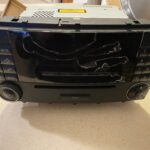Choosing the right diagnostic tool for your Mercedes-Benz or Sprinter can feel like navigating a minefield. Many technicians and enthusiasts find themselves caught between the allure of professional-grade systems like Xentry and the practicality of more affordable, consumer-level options. The question often boils down to capability versus cost, and the waters get even muddier when considering the various versions of Xentry and their associated software.
The desire for a comprehensive comparison is understandable. Ideally, a detailed breakdown outlining the functionalities of Autel, ThinkDiag, and different Xentry systems (C3, C4, C5) would be invaluable. However, the reality is far more nuanced, especially concerning budget-friendly Xentry solutions. Often, these systems rely on “Car Pro Key Xentry” software obtained from unofficial sources, which may not offer the full spectrum of capabilities found in genuine, dealer-level Xentry.
The functionality of these hacked Xentry setups can be inconsistent and unpredictable. It’s not just about whether the software works, but how well it works and what features are actually accessible. The hacking process itself can introduce limitations, and there are even reports of malicious software or time-bombs embedded within these unofficial versions. Support for these systems is virtually non-existent, leaving users in a precarious position if issues arise.
Consumer-grade tools like Autel and ThinkDiag offer a more straightforward user experience and often come with manufacturer support. ThinkDiag, for instance, demonstrates impressive capabilities, sometimes even surpassing tools like the Autel AP200, particularly on older models like the T1N Sprinter. However, these tools also have their limitations. Accuracy can be questionable in certain tests, and vehicle module compatibility isn’t always clearly defined. While companies like ThinkDiag are responsive to feedback, pinpointing specific vehicle and function discrepancies remains a challenge.
Ultimately, the “best” diagnostic tool is highly dependent on individual needs, vehicle types, and budget. There’s no easy answer, and thorough research and potentially hands-on testing are often necessary to determine the most suitable solution. The dream of a simple spreadsheet comparing all options remains just that – a dream. For now, navigating the diagnostic tool market requires careful consideration and a degree of acceptance that definitive answers can be elusive.
